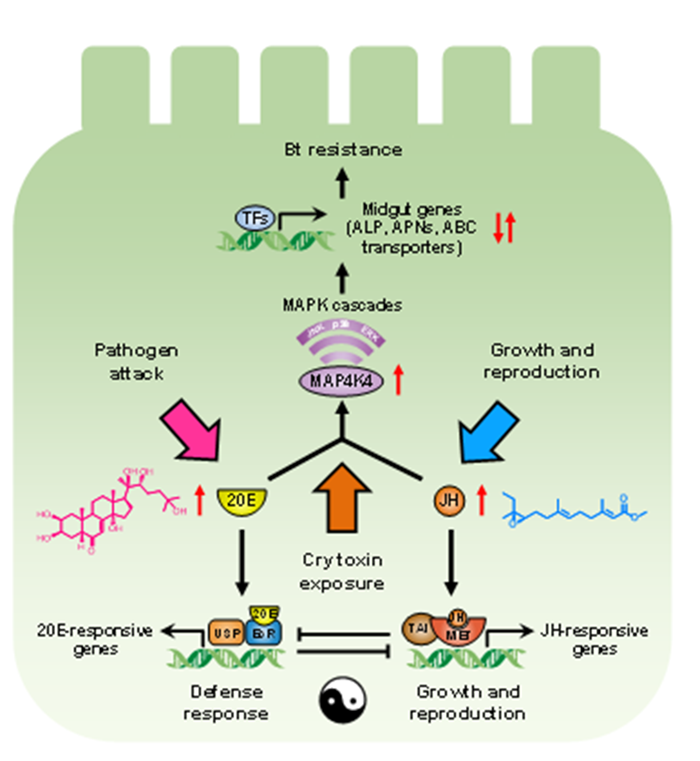The arms race between entomopathogenic bacteria and their insect hosts is an excellent model for decoding the intricate coevolutionary processes of host-pathogen interaction. The research team demonstrated that the MAPK signaling pathway is a general switch to trans-regulate diferential expression of aminopeptidase N and other midgut genes in an insect host, diamondback moth (Plutella xylostella), thereby countering the virulence efect of Bacillus thuringiensis (Bt) toxins. Moreover, the MAPK cascade is activated and fine-tuned by the crosstalk between two major insect hormones, 20-hydroxyecdysone (20E) and juvenile hormone (JH) to elicit an important physiological response (i.e., Bt resistance) without incurring the significant fitness costs often associated with pathogen resistance. Hormones are well known to orchestrate physiological trade-ofs in a wide variety of organisms, and our work decoded a hitherto undescribed function of these classic hormones and suggests that hormonal signaling plasticity is a general cross-kingdom strategy to fend of pathogens.

Insect hormones activate the MAPK signaling pathway to mediate the molecular mechanism of Plutella xylostella resistance to Bt Cry1Ac toxin



